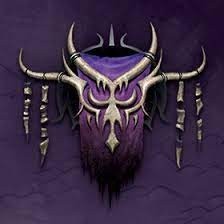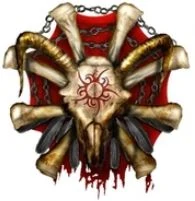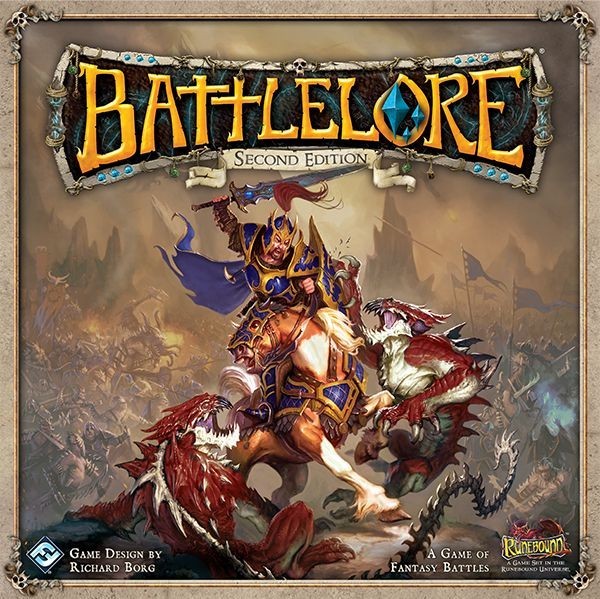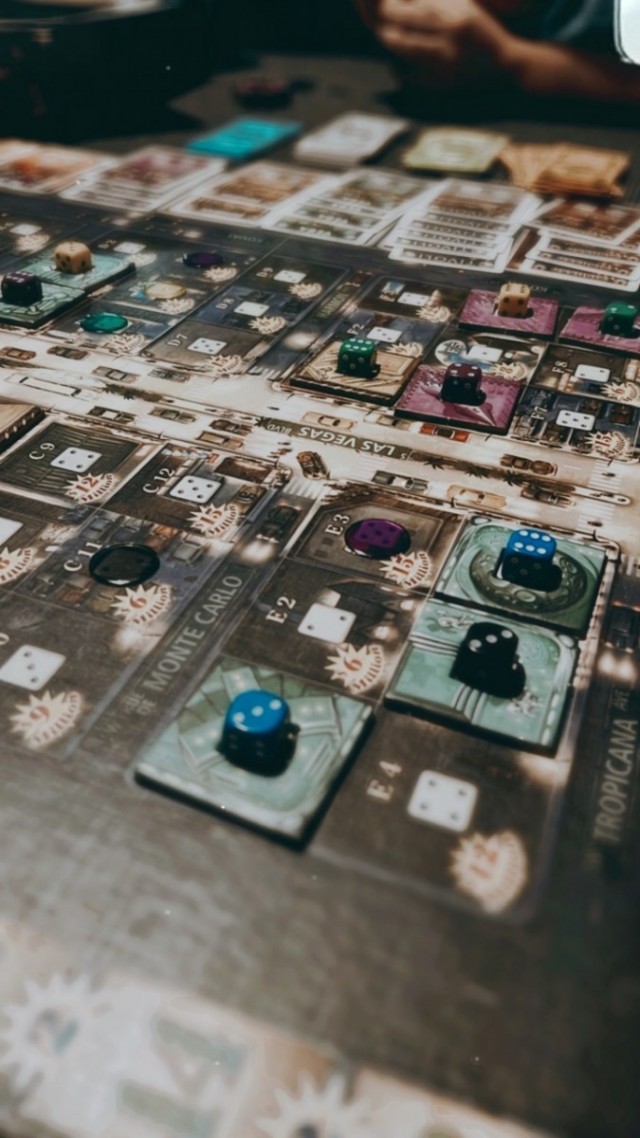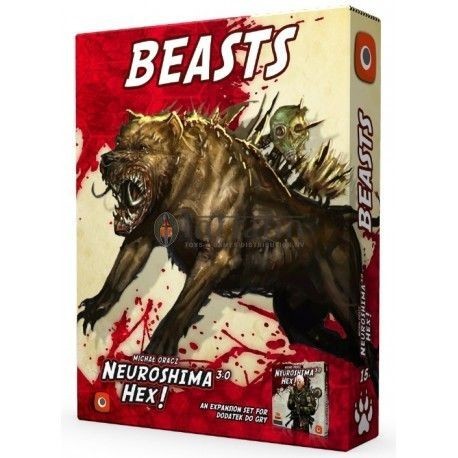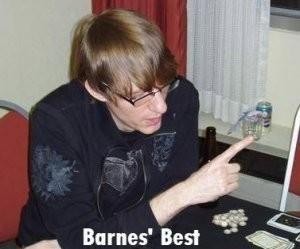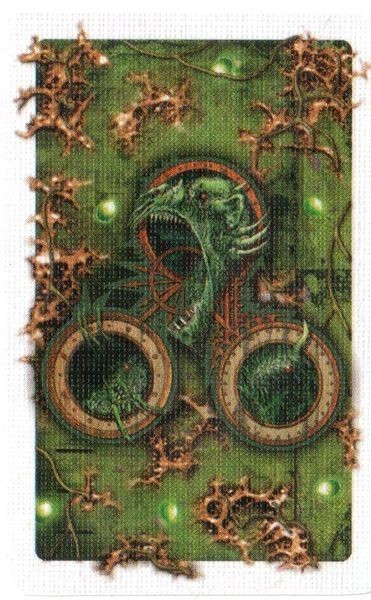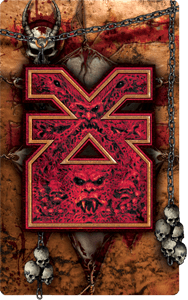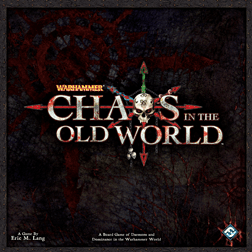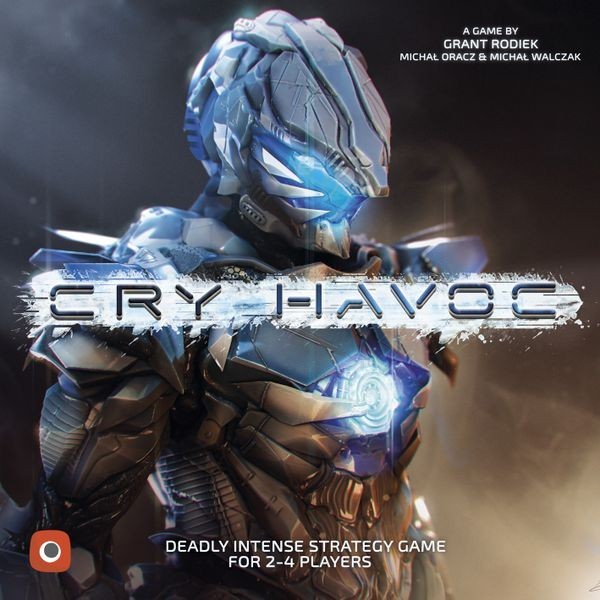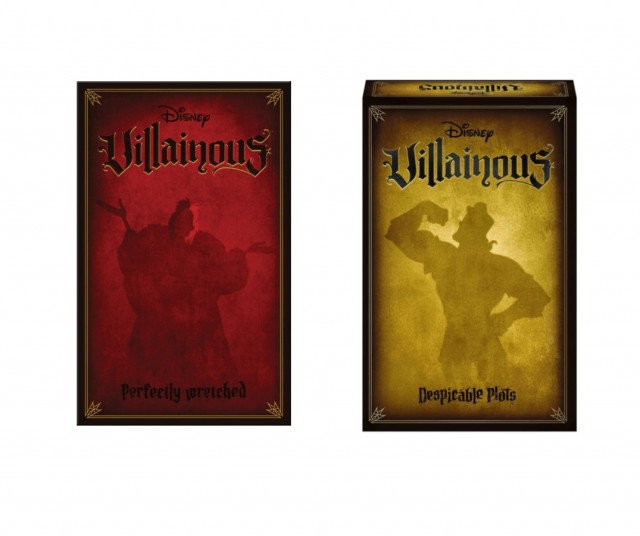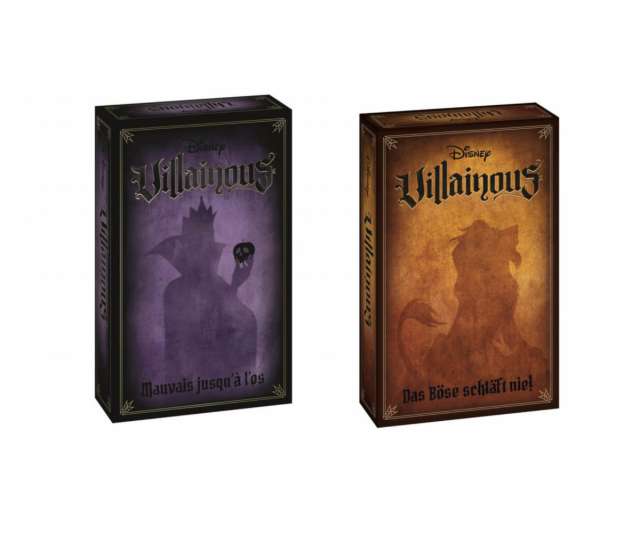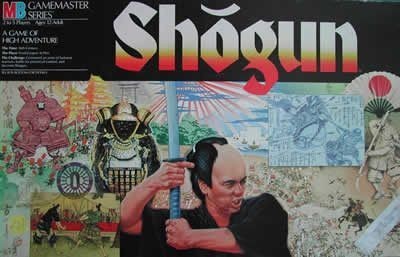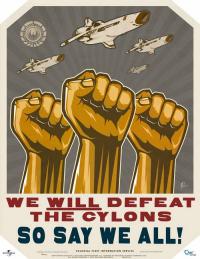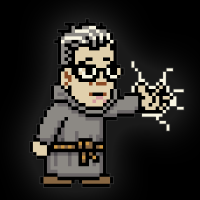A Fantasy Flight Games classic that had good and questionable things to present about the DoaM/4X genre.
How can I do a From the Depths when the game is "only" 10 years old and is mildly legendary among the followers of Fantasy Flight Games' glory days? Well, because my original intent for that column name was not only one for games that were older but were those that had not seen the light of day in a long time. They were deep in the shelves, as it were, and Runewars is certainly one of those. Despite it carrying the aura of the faded golden years of FFG and having mechanics, like the Season cards, that are still lauded today among veteran DoaM players, I think it's fair to say that Runewars takes a bit of heavy lifting to get to the table and keep it there. And that's not just because it was originally in one of FFG's famous/notorious "coffin boxes." Indeed, it's a game that's kind of fraught with baggage, positive and negative, and I think it being something over a decade since its emergence is enough time to take a look back and see what it's about.

So let's tackle the obvious one straight from the gate: the box size. The first coffin box was for Twilight Imperium, for which an argument could easily be made, given the number of components included with that game. The next was for Tide of Iron, at which point the argument became weaker. And then Runewars and the new version of Horus Heresy were released and the argument completely evaporated. The coffin boxes were kind of an exercise of Christian Petersen's ego at that point, as the marketing intent was obvious: Big box must mean big game! Unfortunately, it also meant headaches for retailers, where shelf space is precious; for distributors, who had to create a new packing box to fit these games; and for consumers, where shelf space is also sometimes precious and where lugging games to play into the FLGS is a lot more difficult when you're carrying something of that size. What made it even worse in the case of Runewars (and HH) was the ridiculous amount of dead space inside that enormous box, which is completely out of proportion to its actual contents. The later reprint of the game reduced it to the more conventional (and reasonable) size, but I still have the monolithic original. Shelf space isn't a problem in our house, but Runewars still sits in a separate place by itself, because it's just not space-efficient on the shelves that hold the rest of my (ridiculous) collection.
Runewars also introduced the concept of national factions to the world of Terrinoth, which had previously mostly been a world of cities and occasional regional identities (Al-Kalim, etc.) but nothing that would inspire the idea of raising an army of elves or other races to do combat with the undead lord known as Waiqar the Undying, whom we also hadn't heard of. This was a dip into a TI-style approach that spoke of a background beyond just whatever adventures One-Fist or Silhouette were having that day. This kind of became the dominant worldview for Terrinoth afterwards, in that subsequent games, like Rune Age, Battlelore, and Runewars Miniatures were more concerned with the conflict that Runewars had revealed than anything that was happening in an adventure game. Some would suggest that that indicates the flexibility inherent to the Terrinoth setting, while others would say it indicates the vanilla nature of that setting, which lacks anything as colorful as TI's space lions and Dune/Star Wars-like thousands of years of history.

This game was also the third as sole designer by Corey Konieczka, who would soon be considered among the best of FFG's studio, for creations on which he had the lead (Battlestar Galactica) or sole (Star Wars: Rebellion) designer credit. (He also designed Rune Age.) One can see some elements of his approach throughout Runewars and it's not hard to imagine that some of the more innovative stuff, like the Season cards, are Corey ideas slotted right alongside concepts like Starcraft's stacking order system or Middle-Earth Quest's "cards as health points" mechanic. (This is all with the acknowledgment that an argument can be made that Runewars is simply a better version of FFG's Battlemist, as well.) But that's not to say that Runewars doesn't have its weak points. Indeed, it basically needed a reprint (in a smaller box) to address them and it's debatable if some of them could be addressed in the first place (i.e. perhaps this is just the type of game that Runewars is), which may lead us to our conclusion as to why it doesn't come off the shelf as often as it might for a "legendary" game by one of the better designers of the past decade-and-a-half.
The victory conditions are... questionable. In the original version, you needed six Dragon Runes to instantly win. That led to a number of "surprise" wins, where people thought they had gotten themselves into decent positions only for someone to, by luck of the token draw, suddenly say "Game over." The fact that you had to go out and contest territories with these tokens meant that turtling wasn't really an option, which is generally a good thing in a DoaM, as no one wants to keep throwing themselves against a wall or have one player be the victim of a couple others because the fourth simply isn't coming out to play. But often that same luck of the draw meant that turtling was a feasible option because if no one had won by the time six years (24 Season cards) had passed, the person with the most Dragon Runes would win, anyway. Most of the time, that's just the cost of doing business in that type of game and was a return to the idea of genuine "area control" in an era when wargames were increasingly (and still often are) determined by victory points, rather than who got there the fastest with the mostest. That includes one of Runewars' closest comparisons and sister coffin box game, Twilight Imperium. When the reprint emerged, the rules had changed such that finding oneself with six Dragon Runes meant that you had to announce that situation and then hold on to them for another year of game time. If you were unable to do that, the game would continue until someone could or until the end of the seventh year. That is a recipe for the polar opposite of surprise endings: the game that feels like it will never end but should have two hours ago.

But like any game, Runewars is going to have its nuances and aspects that are more appealing to some than others. And one of the most prominent aspects is the method by which you win those territories with Dragon Runes: card-based combat. This was a running schtick with FFG around that time, in which they had apparently decided that the prevailing opinion on BGG- that all dice are bad -was correct (Randomness!), but random card draws are apparently OK. That's a very simplistic way of looking at it and, indeed, the combat system in Runewars, although initially awkward for many players, has a certain level of elegance to it that actually reduces randomness if you take into account all of the controls in your hands. In the same way that Games Workshop games aren't just about rolling fistfuls of dice and hoping they go your way, but instead maneuvering so that the results are similar even if the dice do turn against you, Runewars' card combat is often eminently controllable by careful players who are aware of what troops are involved in any given battle. The information needed is actually all there right in front of you: the very bases that your units are standing on. Enough games of Runewars (or the ability to sit down and examine the Fate deck for a while) will give you a good idea of how often particular symbols come up for particular units. That, in turn, should give you an idea of how to turn the odds in your favor, just like with dice-driven combat. On top of that, drawing X number of cards, unlike dice, also gives you more options for how your units function that goes beyond just rolling whatever number is necessary to get a hit. Your units may end up performing multiple abilities in a single fight. In that way, it's actually a deeper and more textured combat method than those fistfuls of dice.
But the experience of playing a game is often a lot more than simply what cards you're drawing or how cool your units' abilities are. There are often little, visceral pleasures like saying: "I need two 6s to win this fight!" and then proceeding to make that roll. In that way, it can often be more satisfying to have that simplicity instead of: "I need to draw a crystal ball for my Blood Sisters so that I can then sacrifice one and eliminate an enemy rectangle so that I'll have more strength... and then I'll win!" That latter statement has its appeal to those who've played, but perhaps less so to those who are new to the game. Similarly, the hero system was somewhere between innovative and a misdirected marketing tie-in with Runebound. As noted, the entities of the Daqan Lords, the Latari Elves, the Uthuk Y'llan, and Waiqar had no presence in Terrinoth before this. To tie it in to the "Rune" world, FFG and Konieczka decided that Runebound's heroes would be functional units in this wargame. Except that they wouldn't be doing any fighting, outside of somewhat random encounters with each other. That made the whole hero/questing system feel kind of pasted on to what was otherwise an interesting strategic wargame. When it was discovered that, in fact, one of the best ways to acquire the crucial Dragon Runes was to send your heroes out looking for them, a lot of people felt like they were boxed into a system that otherwise felt extraneous. This, too, was partially addressed in both the reprint, where heroes could be moved with Order cards and support nearby units, and the expansion where heroes could be Commanders and lead an army in the mass combat happening in their neighborhood, rather than being warriors of legend that don't want anything to do with that. When I first read the rules for the game, the first image that came to mind was Warcraft III, where leveling your heroes is often much more important than what units you produce and how you maneuver them. I wasn't thrilled with WCIII (which eventually spawned the totally hero-focused MOBA genre, via a mod of that game called Defense of the Ancients) because I was an old-fashioned wargamer: These are my units. If I outproduce you and/or produce a counter to your army and you don't respond and/or I maneuver/organize my troops better, then I win, no matter what level your paladin is. Or that's how I felt it should be. That perspective didn't make me feel all warm and fuzzy about what seemed, at first glance, like a similar exercise in Runewars.
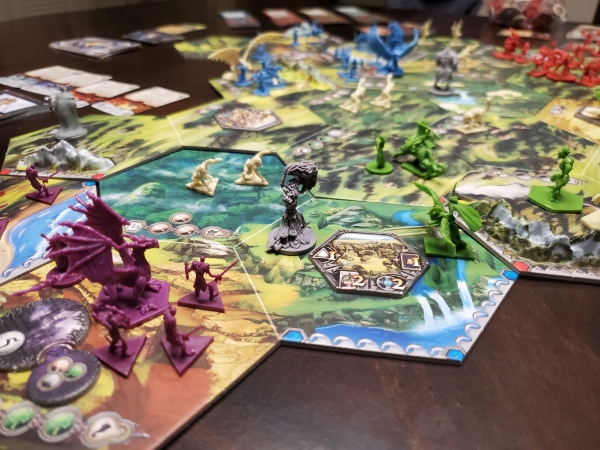
The counter-argument, of course, is that the hero game-within-a-game is part of what makes Runewars distinct from a hundred other 4X-type games. This is on top of needing three different resources for both recruiting and maintaining units, the variations created by Seasons cards, the Tactics cards, the Influence bids for roles, the ability to recruit neutral units with varied abilities in addition to the six (with expansion) faction unit types already available to each player, and so on. The counter-counter-argument is that Runewars already had enough that makes it distinct even without the hero system. But, again, the Hero Support system and the Commander system may have opened a few eyes (including mine) to what could be done with those characters. It was also inarguable that focusing on your hero(es) often turned what was potentially a six-to-eight hour epic of a game into a three-hour miniseries, which is due some consideration for those that won't normally be able to sit down for the length of a workday to get a game of TI4 in. That also doesn't change the fact that Runewars is every bit as complex as TI4 (That's what that coffin box was for-!) You still have tech in the form of Developments. You still have control markers that don't let you leave a space you've already activated, forcing you to think in stages, rather than snowballs. You still have political machinations in the form of the Influence bids and the Primarch getting to decide who wins ties. You still have major, strategic decisions that you're making with the Order cards every season, in addition to the smaller, tactical decisions you're making with both units and heroes. Everything you want(?) for a day-long game is present, no matter how much Varikas the Dead and his cohorts might speed things up with their Timmoran Amulets.

But, again, when people talk about Runewars, they almost inevitably talk about the Season cards because of the significant impact that their primary abilities have, but also because their consistent secondary abilities keep the game moving forward with Tactics/Influence gain or hero functions or, best of all, the acknowledgment that most medieval/fantasy-style armies don't function as well in winter because it's tougher to keep everyone fed. Among my favorite historical wargames based in medieval or ancient times are those that have a function for "winter quarters." Runewars handles this well and keeps armies restrained by their logistics, just as they always have been in, y'know, "real life." Some favorites follow:
Spring: I wasn't often thrilled to see Long Winter show up, but when the entire table has to make tough choices about which two Order cards to leave in place, which includes a game leader who might be snowballing (appropo) and now is faced with a major pothole in their road to victory, it's an exciting moment. Similarly, Stormy Weather was usually an excellent occurrence, as we would see just whom was willing to spend Influence to enable not only their immediate plans, but perhaps everyone's. And, again, keeping the game moving and dynamic with cards like Heroes for Hire and New Recruits was important, as well as enabling a small reset if someone needed it with Prepare for the Coming War. There were several times that players in our group were grateful to get out from under an objective that had become untenable.
Summer: This is the first Wizards' Council season, which was always interesting. The effects of said Influence bids could often be seriously pernicious, though, which meant that valuing Influence was important, even to factions or players that normally didn't. Being the target player of The Broken Rune or Mandatory Disarmament or Fires of Heaven could be crushing for that turn. OTOH, winning the bid for Sacred Portals or Reroute Supply Caravans could catapult you forward. The one card that most didn't want to see was Drought, although it certainly enhanced the value of units that easily created routs, like Chaos Lords.
Fall: The card that everyone wanted to see was Bountiful Harvest, since it would often mean a positive reset of your dials. The card that no one wanted to see was Famine, since it could often mean a negative reset and knocked out an Order card for a season. But there were some really interesting and powerful effects, like Threatened Home Realms that virtually demanded expansion by having to get a Dragon Rune back; Kalladra's Trove, which could provide a phenomenal benefit for having multiple heroes of your alignment; and Gold Rush, which provided some benefit to owning those occasionally difficult mountain hexes and being willing to fight over those precious ore territories.
Winter: This is the second Wizards' Council season and most of those bids and, indeed, most of the cards in this season are about obtaining Dragon Runes, one way or the other. Power for the Pious was among the most interesting of them, since the lowest bidder would have the opportunity to stoke conflict among all of the other players by placing runes in highly-contested areas. Death Walks Among Us could be devastating for the target, though, since the loss of either 5 Influence or 5 Tactics cards is pretty huge. This is where agreement among those not leading could produce results, however. Throne of Ice is one of the few ways to introduce Cryomancy tokens and Lights of the North made it a great time to be a wizard (circle unit.) This is also the only season where all the cards are unique, so once you see one, that's the last time you'll see it for the game.
The different offices (Primarch, Guildmaster, Captain, Lord Commander) also provided ways for different types of 4X players to really engage in their preferred method of play, which can be a bit of a rare bird among this type of game. And that reminds me of another much-contested debate: Are those factions that you were playing, with all of their variety, actually balanced? The popular conception was that the Latari are poor in the early game when Influence isn't as valuable and often couldn't catch up. Similarly, the Uthuk are seen as poor in the late game when their bursts have less impact. Waiqar is the one most often seen as overpowered, while no one really talks about the boring humans, the Daqan Lords, at all. So, let's talk about them.

Daqan Lords: Just looking at their units, the word that most often comes to mind about the Daqan is "durable." A following phrase is "and surprisingly bursty." It's perhaps a surprise because the staid, vanilla humans aren't supposed to be able to dish out 2 wounds with a triangle unit like Footmen. Or have 4 damage drop on you with a Roc. They're supposed to just endure the slings and arrows and then win combat anyway with the strength of their Siege Towers. But they also have a 2 health unit in the 2 initiative slot (the Knight), which isn't common. They're also built to gain a Tactics card edge, through the Destiny result of both Knights and Noble Wizards. So, perhaps, "all-rounder" is a better term than "vanilla." But it's true that the Daqan don't get pigenholed by the game into a particular role and I've seen that pay off, as they've tended to win in our games as often as Waiqar.
As for Developments, both Support of the People and National Draft are easily worth the effort. Footmen do a lot of work for the Daqan and getting free recruits, plus being able to put more of them at the front while your Peasants hold down the flyover territory (That's a Roc joke...) is a serious advantage. The unit upgrades are a little less exciting, although if you find yourself in close contact with a lot of Chaos Lords or Dark Knights, Nerekhall Rangers is certainly something to consider. Likewise, if you find yourself on the offensive and pressing someone's territory, War Harnesses or Reinforced Battering Rams might be something to consider. But the best unit upgrade, by far, is Paladins, since it simply enhances what is already probably your best and most efficient unit. Remember, the Tactics hand limit is 10, which is pretty hard to get to, so having more options is always better than fewer. (But you can only use them next season! (This is todays' PSA for most forgotten rule.))

Waiqar the Undying: This is the only faction named after one person, as opposed to a race of peoples. That's presumably because the undead are egalitarian in their animation (i.e. they can come from anywhere and anyone)? Regardless, Waiqar's guys are perhaps the faction I've most heard complained about as OP, based largely on the unending horde of Reanimates that they have access to. Those are, of course, triangle units but ones which can often dish out their Destiny power (2 wounds) because of their sheer numbers. I think that overlooks a key factor in that the best Waiqar unit is actually the Necromancer; the ones that create all of those Reanimates. And it's a good thing that they're so versatile and adaptable because the rest of Waiqar's units can be a little mundane (Oddly enough.) Don't get me wrong: Great Wyrms can be, well, great and Skeleton Archers can occasionally be a real thorn in the side of someone who thought his hordes of rectangles (like Knights) were going to just roll over your triangles. But it's a fair question to ask just what you're getting for your wood and ore if it's not more Necromancers and Reanimates. That said, having two types of hexagon units is not an advantage to be overlooked, given their standard offensive output.
On the Development angle, of course you want Lands of Blight. More Reanimates is more fun for everyone! And if you start the game near some good Neutral units, Soulbind might be a great choice, although it's costly for Waiqar at two wood. Toxic Wyrms is something to consider, since it gives you the option of absorbing a rout early on and still being able to draw cards (and still adding the Wyrm's strength, per the reprint update for hexagon units.) But the rest of your options are kind of underwhelming. Dark Knights and Vampires aren't that impressive to begin with and Horror Riders and Midnight Chalice don't add that much to them. Switching Skeleton Archers to rectangles with Unholy Ballistics might be worth it in some scenarios, but the drop in initiative for a triangle unit is huge (Your other triangles are already initiative 4), so my experience has been that it's generally not a step forward. Hordes and Wyrms are usually the way to go.

Latari Elves: Similarly, why is it "Latari ELVES" and not just "Latari" or "Latari Lords" or something like that? It's not the "Daqan Humans." It probably won't be too surprising to see the typically "questionable" factions be the ones that are steered in a direction by their opening resources. In the case of the Latari, it's Influence. People have frequently bemoaned their slow start because they don't have the card advantage that the other three factions do. But what they do have, almost across their entire unit roster, is the ability to do precision damage, which is huge. Archers' Crack Shot hits a "unit of your choice." Pegasus Riders (It's like a Beatles song: PEG-a-sus RI-ders!) rout "unit(s) of your choice." Warriors damage or destroy a damaged or routed "unit of your choice." The Latari make taking hits on your bigger units a real risk. Even Leonx Riders can work hand-in-paw with Sorceresses to destroy specific units. It can really be quite devastating. Of course, that also means hitting Destiny symbols fairly often and living/not routing through enough of the fight to really get to those powerful Warriors. But that's probably why Pegasus Riders are Flying, Fast, and initiative 2. The problem is, they also need a lot of ore to be recruited in the first place. Again, slow starts are a thing with the Latari.
Development-wise, Season of Twilight is really expensive (2 ore, 1 wood) but it's almost always worth it. The ability to advance a dial as soon as you take a territory that you can immediately exploit next season with a Recruit will usually pay off quite rapidly. After that, Predator's Will should be an automatic selection. The ability to draw like hexagons from an initiative 2 rectangle is amazing. Further reinforcing their already present advantages, Silver Stables of Elmhall is also great, because you get Paperback Writers and Influence in one go. Noble Heart and Keepers of the Sigils are certainly considerations, especially if you're dealing with lots of routing units for the former and if you're usually outnumbered for the latter (and you often will be.) I've never been particularly thrilled with Forest Guardians, so Ancients moving them up to initiative 4 isn't a real draw. But, again, it's the only hexagon unit available to the faction, so it's not outrageous to try to enhance their potential.

Uthuk Y'llan: And, at last, we come to my favorites. Despite a lifetime of working for progressive causes (I'm an SJB: social justice berzerker), I'm always drawn to the "evil" factions in these kinds of games. It was Dark Eldar and Skaven in Games Workshop games. It's the demon-worshipping savages in Runewars. Maybe it's the theme of self-sacrifice...? However, said self-sacrifice, usually of Berzerkers, comes across much more easily in games like Rune Age and Battlelore. With battles decided by strength (i.e. number of units) in Runewars, you really have to weigh your options before randomly engaging the Fury ability. Having two circle units in Warlocks and Blood Sisters can be useful in protecting yourself from things like Dragons, though. Plus, Warlocks have the broad Destiny attack and Sisters have the self-sacrificial targeted one to thin the opposing ranks like no other faction can do. But the key to really making the Uthuk work is often exploiting the initiative 1, Fast, rectangle Flesh Rippers. The amount of damage they can deal out and survive if they hit Destiny (since it affects all Rippers in the battle) is often enormous. Also, Chaos Lords and Obscenes work (ahem) obscenely hand-in-hand to make up for all of the self-immolated Berzerkers and Sisters, since every rout gets even worse for your opponent. Just like in Battlelore, do not overlook the Obscenes.
Speaking of obscene, a number of Uthuk Developments could carry that title. Frenzy literally doubles the damage that your Berzerkers dish out. Infernus lets you pick the casualties of Rain of Fire. Covenant of Blood doubles your recruitment of Blood Sisters. Hunger for Revenge saves your precious (precious!) Obscenes from "destroy routed units" effects. All of those are easy first picks, depending on what units you enjoy using, and Infernus and Hunger are ridiculously cheap for what they enable. This is what is usually meant by the Uthuk snowballing early. The difficulty is in maintaining that momentum when you'll often be targeted by Wizards' Councils and not have the Influence to win many bids yourself. Speaking of self-sacrifice, Into the Underfires can potentially be an easy win of a big battle, but keep in mind that Chaos Lords are not easy to recruit. I can't say that I've ever been in a situation playing the Uthuk where I thought that Deserts of Y'llan was a good idea. Especially since the Uthuk tend to slow down in the late game, destroying the territory nearest your home realm is wonderfully thematic, but rarely strategically wise.
So... yeah. Runewars. It's still a great game. It's not without its flaws and it certainly benefits, as many DoaMs do, from the group as a whole having experience with the game, as new players can often feel lost amid the information overload and often quirky methods of play and winning. But it's definitely one that I'm glad to still own (even in the original coffin box!) and hope to haul off my shelf when the plague seasons/years have passed us.
 Games
Games How to resolve AdBlock issue?
How to resolve AdBlock issue? 